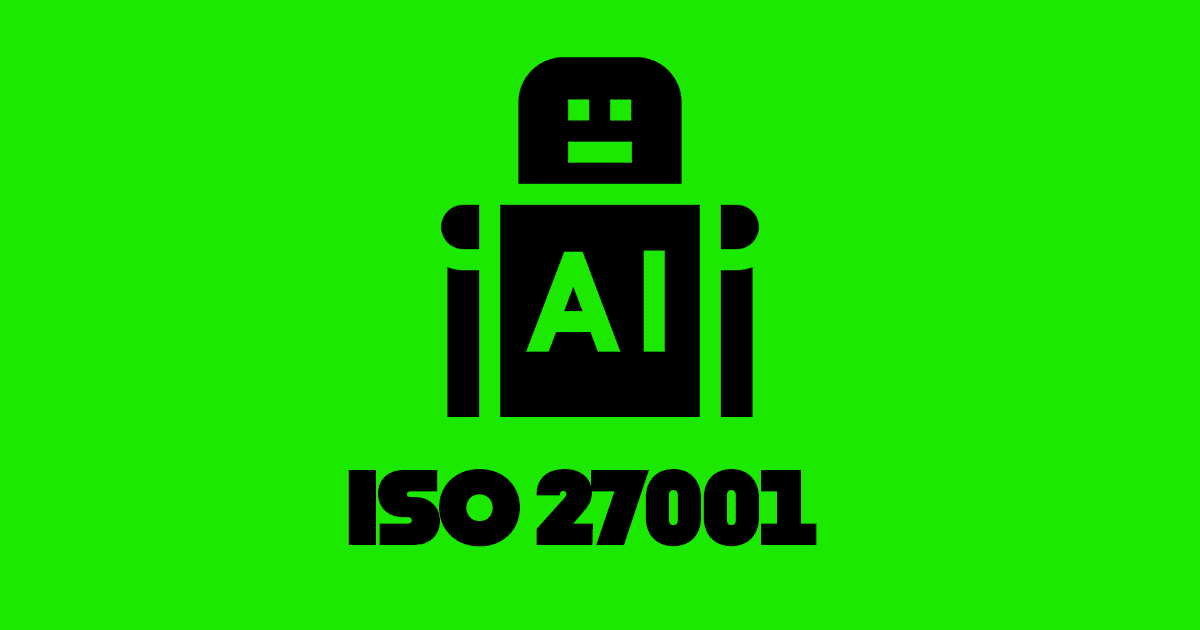Introduction
Artificial intelligence (AI) is a hot topic at the moment. It’s taking over our jobs, our lives, THE WORLD! AHHHHH! Calm down kids, calm down.
This is the reality: When we take away the hype and negativity surrounding AI, when used correctly and fed the correct prompts, it can actually benefit organisations in the information security space.
We can use it to make our lives easier and improve processes within information security; from detection and prevention to response and recovery.
In this blog, we’ll explore how artificial intelligence is being used to support ISO 27001, as well as diving into its benefits and its challenges.
I’m Stuart Barker: Founder of High Table (the fastest growing ISO 27001 company, globally), Information Security expert and the ISO Ninja. I’m here to help small businesses and start-ups like yours, by making ISO 27001 accessible and offering game-changing industry advice.
I even launched the first and fastest growing ISO 27001 AI.
Let’s get stuck into AI and how it’s evolving ISO 27001…
What is Artificial Intelligence?
When we talk about AI in today’s world, we are generally talking about machine learning technology. In basic terms, software algorithms with the ability to learn. The more data it has access to, and the more it completes a task – the more capable it becomes.
By now, you’ve probably heard of chatbots like ChatGPT and Google Gemini. They’ve been programmed to give us the answers to pretty much anything we ask of them, but can we really trust them to make information security management more efficient?
What is ISO 27001?
ISO 27001 is the leading international standard for information security. In simple terms, it’s a set of guidelines and best practices required to create and maintain an effective ISMS (information security management system).
An ISMS is a framework of policies, procedures and controls designed to monitor and protect an organisation’s sensitive information via effective risk management.
DO IT YOURSELF ISO 27001
All the templates, tools, support and knowledge you need to do it yourself.
The top 5 ways AI is transforming the ISO 27001 process
The first ISO 27001 AI to launch uses a large language model of specific ISO 27001 resources based on the knowledge of the ISO 27001 Ninja and industry best practice.
To automate compliance tasks
It’s being used to automate many of the time-consuming tasks that are required for ISO 27001 conformance. This includes tasks like risk assessment, incident response, and security awareness training.
To improve risk management
It’s being used to analyse large amounts of data from various sources to identify and continuously assess risks. Organisations can spot threats faster and keep on top of their security measures to reduce risks.
To enhance security controls
It’s being used to develop and implement more effective security controls. This allows businesses to protect their information assets from unauthorised access, use, disclosure, modification, or destruction.
To boost incident response
It’s being used to automate incident response tasks. This enables companies to respond to incidents faster and more effectively.
To improve security awareness
It’s being used to create more engaging and productive security awareness training. This can help businesses to reduce the risk of human error.
The benefits of using Artificial Intelligence for ISO 27001
- Increased speed and accuracy: It can automate many of the tasks that are required to meet the standard. This can help organisations to comply with the standard faster and more accurately.
- Reduced costs: It can automate many of the tasks that are currently performed by human resources. This can help reduce the cost of compliance.
- Improved efficiency: It can help organisations to improve the efficiency of their compliance operations. This can free up resources to focus on other tasks.
- Increased visibility: It can provide companies with greater visibility into their compliance status. This can help organisations to identify and address compliance gaps faster.
The challenges of using AI for ISO 27001
- Data quality: The quality of the data that AI is trained on is critical to its reliability and effectiveness. If the data is inaccurate or incomplete, AI may not be able to identify compliance gaps efficiently.
- Bias: AI models can be biased, which can lead to inaccurate results. It’s important to carefully evaluate these models to ensure that they are not biased.
- Complexity: AI systems can be complicated and difficult to understand. This can make it hard to troubleshoot problems and ensure that the system is working properly.
- Security: AI systems can be vulnerable to attack. It’s important to carefully secure these systems to protect them from unauthorised access.
AI is a rapidly changing technology, and its impact on compliance will continue to develop – whether we like it or not. If you’re set on using Chat GPT or any other model, remember to check, check, and check again – it’s not a replacement for human judgment and decision-making.
AI has its limitations, BUT it can save you some time with conformance – in the right hands, when given the right context. (What you put in is what you get out, after all.)
Is using AI in information security worth it?
If you know what you’re doing, it can be beneficial. Whilst you could ask ChatGPT how to streamline your ISO 27001 journey, there’s a faster, easier, more reliable way. And the best bit… you get to deal with a human genius. (He’s got common sense and everything!)


